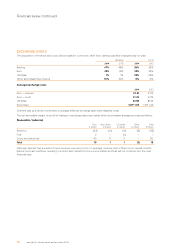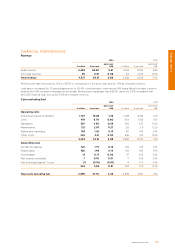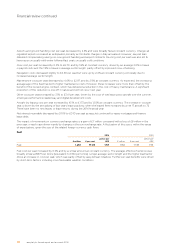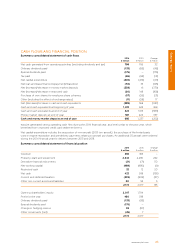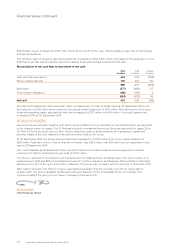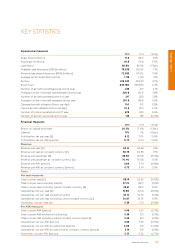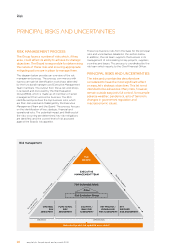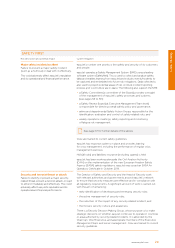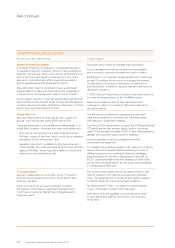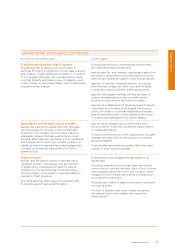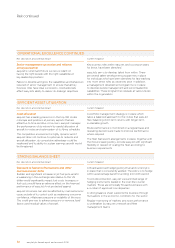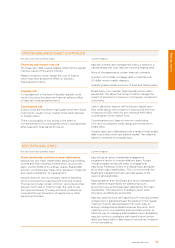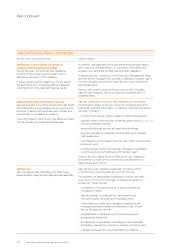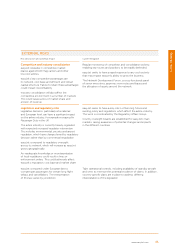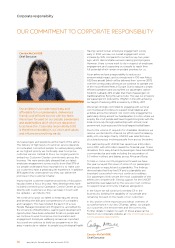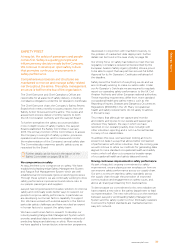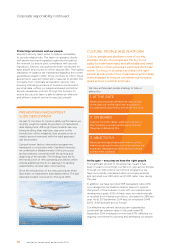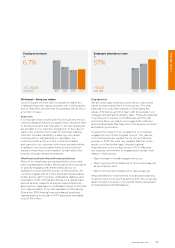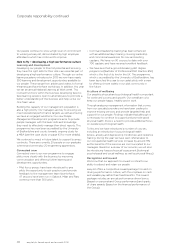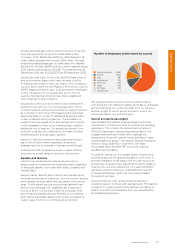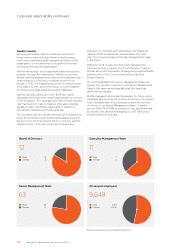EasyJet 2014 Annual Report Download - page 34
Download and view the complete annual report
Please find page 34 of the 2014 EasyJet annual report below. You can navigate through the pages in the report by either clicking on the pages listed below, or by using the keyword search tool below to find specific information within the annual report.
OPERATIONAL EXCELLENCE CONTINUED
Risk description and potential impact Current mitigation
Senior management succession and reliance
on key personnel
easyJet’s current and future success is reliant on
having the right people with the right capabilities in
key leadership positions.
Failure to develop and grow the capabilities and behaviours
required of senior management to ensure that all key
business roles have clear successors, could adversely
affect easyJet’s ability to deliver its strategic objectives.
Key business roles within easyJet, and succession plans
for these, have been identified.
easyJet’s aim is to develop talent from within. There
are several talent development programmes in place
for individuals who have been identified for fast-tracking
into more senior roles as vacancies arise. In addition,
a management development programme is in place
to develop people management and senior leadership
capabilities. These programmes operate at various levels
within the organisation.
EFFICIENT ASSET UTILISATION
Risk description and potential impact Current mitigation
Asset allocation
easyJet has a leading presence on the top 100 routes
in Europe and positions at primary airports that are
attractive to time-sensitive consumers. easyJet manages
the performance of its network by careful allocation of
aircraft to routes and optimisation of its flying schedules.
The competitive environment is highly dynamic and if
easyJet does not continue to optimise its network and
aircraft allocation, its competitive advantage could be
weakened and its ability to sustain earnings growth would
be threatened.
A portfolio management strategy is in place which
takes a balanced approach to the routes that easyJet
flies, balancing short-term returns with longer-term
sustainable growth.
Route performance is monitored on a regular basis and
operating decisions are made to improve performance
where required.
The fleet framework arrangements in place, together with
the Group’s leasing policy, provide easyJet with significant
flexibility in respect of scaling the fleet according to
business requirements.
STRONG BALANCE SHEET
Risk description and potential impact Current mitigation
Exposure to fuel price fluctuations and other
macroeconomic shifts
Sudden and significant increases in jet fuel price and/or
a weakening in the exchange rate relative to the US
dollar would significantly impact fuel costs. Increases in
fuel costs would have an adverse effect on the financial
performance of easyJet if not protected against.
easyJet’s business can also be affected by macroeconomic
issues outside of its control such as weakening consumer
confidence, inflationary pressure or instability of the euro.
This could give rise to adverse pressure on revenue, load
factors and residual values of aircraft.
A Board-approved hedging policy (fuel and currency) is
in place that is consistently applied. The policy is to hedge
within a percentage band for a rolling 24-month period.
To provide protection, easyJet uses a limited range of
hedging instruments traded in the over-the-counter
markets. These are principally forward purchases with
a number of approved counterparties.
A strong balance sheet supports the business through
fluctuations in the economic conditions for the sector.
Regular monitoring of markets and route performance
is undertaken by easyJet’s network and fleet
management teams.
Risk continued
32 easyJet plc Annual report and accounts 2014


